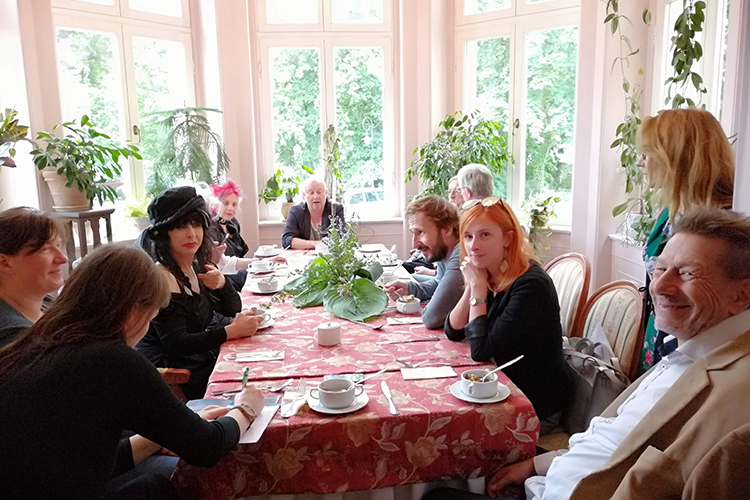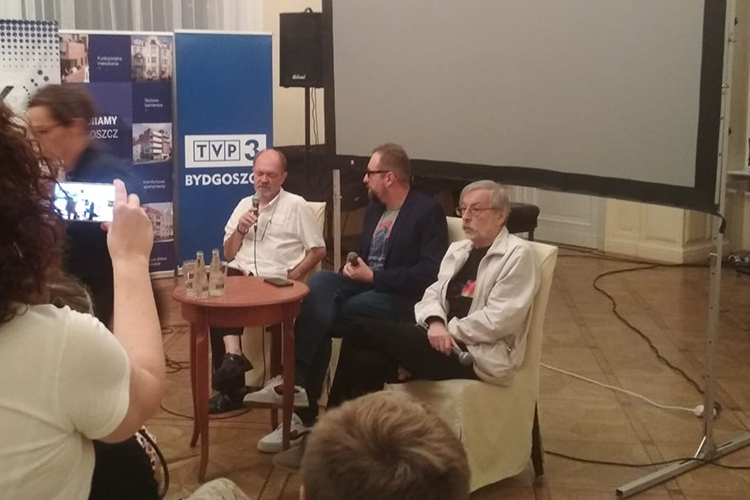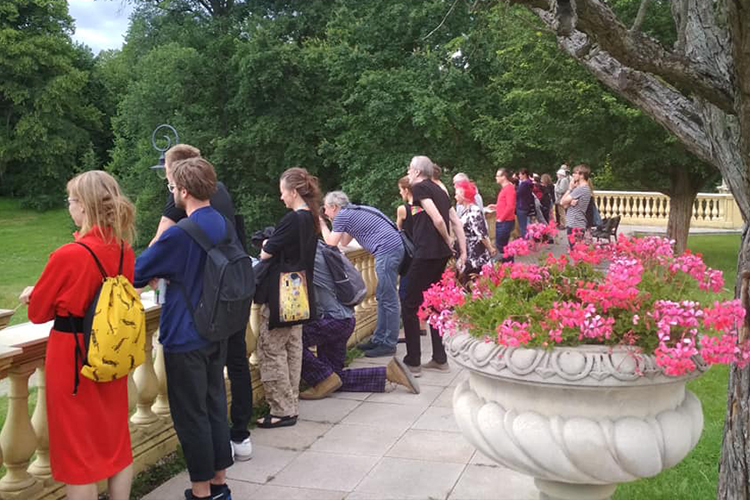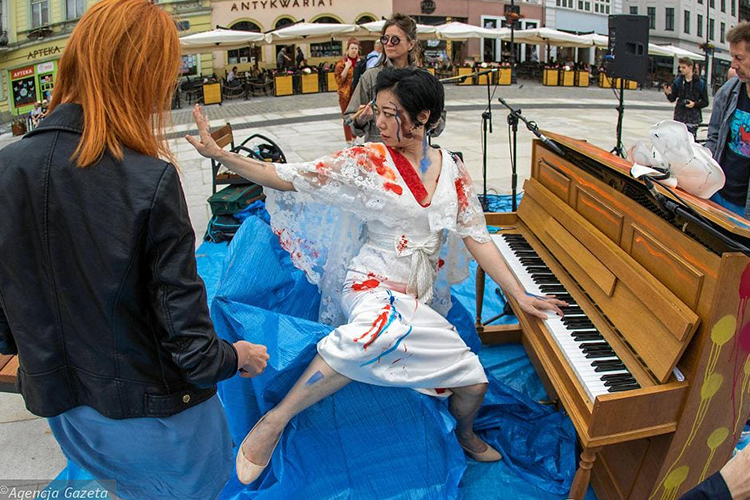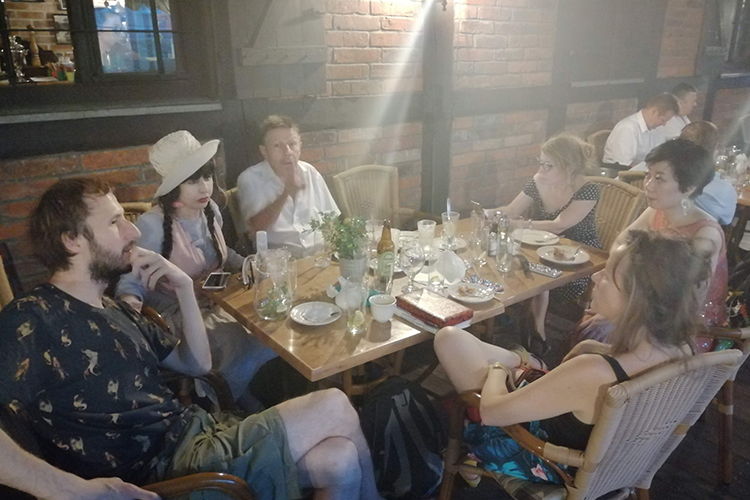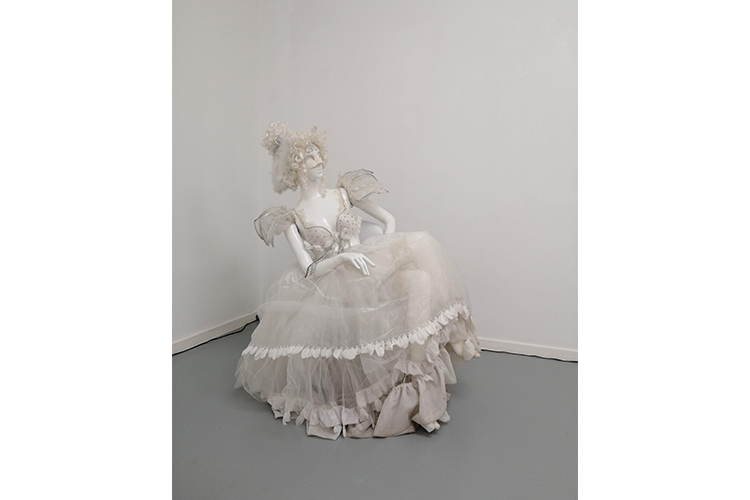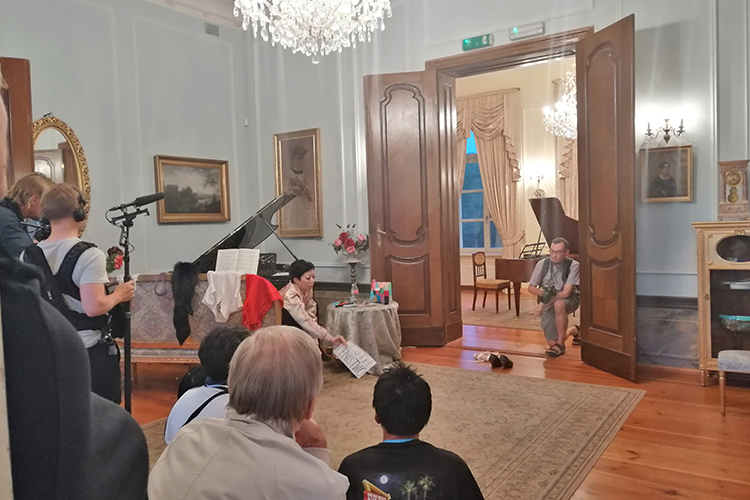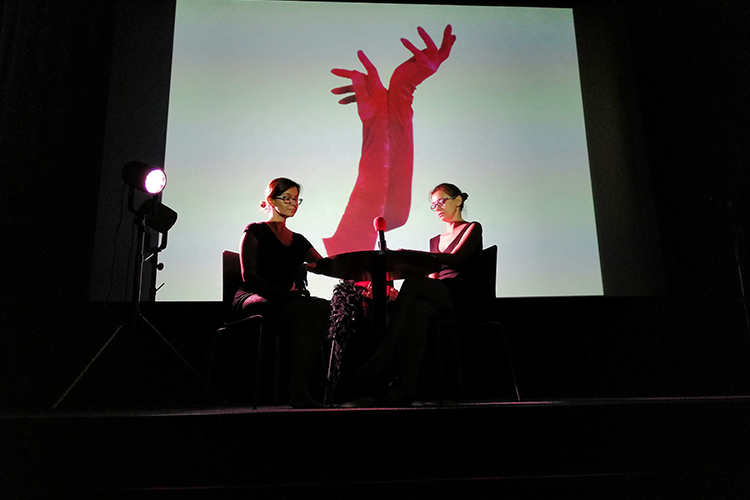Non-Accidental Meetings
The Eye Never Sleeps – Kuyavian-Pomeranian
THE GAME
30.06.2019– 04.07.2019
The Ostromecko Palace / The Municipal BWA Gallery in Bydgoszcz/ Centre of Contemporary Art in Toruń / Moderator Inwestycje Bydgoszcz Hall

The Eye Never Sleeps 2019
EDYCJA VII
UCZTA
International Non-accidental Meetings “The Eye Never Sleeps” is a Bydgoszcz-based visual arts festival. In 2019 – 2021 there will be three more editions ( VI, VII, VIII) and the themes will be in order: Play; Laughter and Ridiculousness; Chaos and Order. The ideological basis for all editions was developed by Prof. Zbigniew Mikołejko. An integral part of the event is the relational symposium, taking place parallel to the artistic part, and artistic residencies, in which Polish and foreign artists participate. The last (5th) edition of the Festival was attended by about 65 artists and intellectuals. Over the past 5 years we have hosted artists from the USA, France, Ukraine, Belarus, Great Britain, Germany, Sweden, Finland and others. Festival meetings have resulted in many subsequent joint projects involving artists and scientists from all over the world. Meetings and festival activities will take place in Ostromecko Palace, Municipal Gallery bwa in Bydgoszcz, Center for Contemporary Art in Torun, Municipal Cultural Center in Bydgoszcz and Black Dwarf Film Studio located in the post-production halls of Moderator Inwestycje Sp.zoo company.
“The Eye Never Sleeps” meetings have been shaped from the very beginning around the concept of “non-accidental meetings”, that is, meetings which anew – and in a joint effort – take up important, “guiding” ideas of universal culture and try to face anew, in the language of contemporary forms of artistic and intellectual expression, important problems which the outstanding philosopher of existence, Karl Jaspers, defined as “border situations”. Thus these meetings become a special place of interpenetration – in a living, creative process – of various cultural traditions, often distant and archaic, with the living contemporaneity, with art and thought that search, experiment, and are open to the future. It is also about showing the bond between local space – the heritage of this dramatic and multicultural borderland, which was and is the lands of today’s Kuyavian-Pomeranian region – and universal culture, both national and universal. But it is also about an important educational and, more broadly, social aspect – about building bonds between art and “high” culture and everyday life, about initiating in various local environments an interest in artistic creation and participation in it.
Every year the “The Eye Never Sleeps” meetings host not only outstanding artists and intellectuals from Poland and abroad, not only artists from Kuyavia and Pomerania, but also social and educational activists and cultural organizers. Inhabitants of Bydgoszcz and other places in Kujawy, Paluki and Toruñ, as well as students and high school students, are more and more willing to participate in the meetings.
The objectives of the International Non-accidental Meetings “The Eye Never Sleeps” were described in great detail by an honorary member of the artistic group Black Dwarf (the organizer of the meetings) – Professor Zbigniew Mikołejko. In addition to such specific goals as the popularization of culture and art, cooperation between entities, promotion, building a responsible audience, engaging young people and seniors, socializing culture, presenting the most important contemporary artistic achievements, etc., etc., we are guided by goals of significant culture-creating potential in the civilizational dimension. This is the discourse that we have been trying to realize through the above mentioned meetings for over 5 years.
“Game” – Prof. Zbigniew Mikołejko
A game is one of the most universal and most capacious notions. Concepts endowed with so many meanings that in fact it is impossible to enumerate them. They express the most important aspects of what is simply called the human condition. And they refer to various manifestations of our everyday existence, as well as to the fields of art and literature, philosophy and entertainment, economics and religion, politics and psychology, play and science, forensics and war, computer science and magic. The everyday language perfectly illustrates this incredible multiplicity. We often say that someone is playing for high stakes and someone else is playing on the harpsichord, that someone is playing on someone else’s nose or nerves and someone else is playing in Molière’s play, that someone is playing a false role and someone else is playing for life, that someone is playing volleyball or chess and someone else is playing on people’s feelings We also know that the game can be played on various levels: the ordinary ones, where it is simply a way of spending free time, and those where it is about the most important things, related to our existence in the world, to the survival of communities and individuals, to the struggle for truth and meaning of our lives, our culture, work, and existence itself. Also, as the mythical examples of the “game of riddles” (Samson, Oedipus) show, with the struggle between good and evil – for this is a literary reflection of the cosmogonic duel waged by the hero on behalf of divinity against a representative of demonic forces. In the latter case, as colloquial language again confirms, the game reveals its particularly momentous dimension, often reaching to the ultimate, if only metaphysical or moral issues, and revealing itself both in our life dramas and choices, as well as in works of art and thought. It is not without reason that we use expressions such as “playing with fate” or “playing with death”, “playing for everything” or “playing for the highest stakes”. So it is not without reason that in Ingmar Bergman’s masterpiece “The Seventh Seal” the knight Block plays chess with death – for the life of a modest acting family. And not without reason, finally, Shakespeare says brutally, bitterly: “The world is a theater, the actors are people, who successively enter and disappear”.
And in another place: “Life is but a passing half-shadow, a miserable actor who, having won his part for a few hours on the stage, is lost into nothingness – the novel of an idiot, loud, shouting, and meaningless.” But at the same time Shakespeare does not leave us at the threshold of nothingness with despair without a way out. And he gives us the answer, so wonderfully confirmed by his work – that the sense of humanity in its individual and in its communal dimension, of humanity condemned always to the painful game with death, despair and fear, can find salvation precisely in art. And this lesson of his is the main message, the main idea (goal) of the next The Eye Never Sleeps Festival.
Guests of The Eye Never Sleeps 2019
Atma Quartet – a string quartet consisting of the graduates of academies of music in Poland – Katarzyna Gluza (violin), Paulina Marcisz (violin), Karalina Orsik-Sauter (viola) and Dominika Szczypka (cello). The quartet gives multiple concerts, thus popularising chamber music in the country and abroad; their repertoire includes a considerable amount of works by Polish composers
Mirosław Bałka – a sculptor. He also deals with drawings, independent cinema and sound. He is a Professor at the Academy of Fine Arts in Warsaw. The main topic of Bałka’s sculptures and arrangements is the human body and the ‘everyday’ items and substances that accompany it, as well as memory, that is related to the body. His works allude to the passing of time; the theme of Holocaust is also significant to him.
Mariusz Czajka – he is an illusionist, who puts on unforgettable magic performances, attracting the audience from the whole country. He is a member of the National Illusionists’ Club – the only Polish organisation belonging to the International Federation of Magic Societies. He took part in the many congresses of illusionists hosted in Poland, Great Britain, Latvia, the Czech Republic, Germany and the United States
Czarny Karzeł – an informal artistic group founded by Marta Filipiak – a painter, animator and film director, uniting several dozens of people in Poland and abroad, who are not only artists. Czarny Karzeł takes part in social and artistic projects, and creates them; thus giving space for artistic development, meeting, sharing experiences, fostering relations and integrating local and wider communities.
Dostatni OP – a Blackfriar, publicist, a priest of the intelligentsia, retreat teacher. Engaged in the ecumenical movement, dialogue with other religions and the social dialogue. He is engaged in the movement of Youth Meeting Lednica 2000. He is the member of the councils of Teatr Stary in Lublin and the Capital of the Polish Language Festival in Szczebrzeszyn. He has his own YouTube channel: otwarta brama (an open gate).
Kuba Elwertowski – a painter, the graduate of the Faculty of Fine Arts of the Nicolaus Copernicus University in Toruń, has gained a diploma in easel painting, and of the Gdansk Higher School of Humanities. He created of the ‘Parter02’ artistic group and the ‘Apetyt’ Atelier of Creative Processes. He has been a curator of exhibitions, furniture and stage designer, book and poster illustrator and a creator of three-dimensional installation artworks.
Marcin Giżycki – a film historian, art historian, critic, filmmaker, photographer and director of documentaries and animated movies. He has been a lecturer at the Rhode Island School of Design in Providence and the art director of the ‘Animator’ International Animated Film Festival. He has written 8 books and about 400 papers on film and art.
Krzysztof Kozłowski – a film expert and theatrologist. He has worked as a Professor at the Institute of Film, Media and Audio-visual Art of the Adam Mickiewicz University in Poznań. He is concerned with the film aesthetics and theory, the history of the American and German cinemas, the history of the European theatre from the 16th to the 19th century, film musical scores, and the history and theory of the mass media. He has written and edited numerous publications in the country and abroad.
Colette Lumiere (Colette Justine, Colette) – American multimedia artist, known for her pioneering performance, street art, installation artwork and photography-related actions. Her avant-garde works have had a profound influence over the pop culture. In her works, she explores the male and female gender roles. In her installation artworks she often employs soft fabrics, at the same time becoming their central element.
Eriko Makimura – a Japanese pianist and a stage performer. Eriko started to play the piano when she was only two years old. She studied at the Kyoto University, as well as in Berlin and in Hannover. She has made numerous radio and television records. She has founded the ‘Eriko Makimura & Co.’ company. In the original ‘Chamber Cabaret’ she has presented a new form of art; including performance.
Krystyna Mazurówna – a dancer, choreographer, writer and a journalist, has worked in France since 1968, a soloist of Casino de Paris. She has graduated from the Warsaw’s School of Ballet, has performed in the Polish National Opera and the Syrena Theatre. She established the ‘Fantom’ group of modern dance and a dance group ‘Ballet Mazurowna’ she has performed in France with.
Zbigniew Mikołejko – a philosopher and historian of religion, essayist, pedagogue, a PhD in philosophy. He has worked as a Professor at the Institute of Philosophy and Sociology of the Polish Academy of Sciences, has been a member of the American Academy in Rome and a lecturer at many colleges, academies and universities. He has written almost a thousand publications, in 8 languages.
Bogumił Paszkiewicz – a journalist and publisher. He likes people, loves books and is mad about jazz. For many years he studied law and journalism at the University of Warsaw, but he considers STS, Hybrydy and Stodoła clubs to be his real universities. He writes limericks.
Grzegorz Pleszyński – an artist and pedagogue, has been engaged in painting, drawing, performance, installation artwork, video art and music (He has published 8 albums). He launched social-oriented campaigns (Antydepresyjna Szkoła, Antydepresyjne Miasto / Anti-Depressant School, Anti-Depressant City), worked with prisoners, children and the disabled. He has taken part in numerous exhibitions, both individual and collective ones, e.g. in Australia, Germany, Russia and Italy.
Pracownia Działań Przestrzennych Mirosław Bałka Studio of Special Activities
– tries to recognise and creatively shape the spaces we move and function in, concentrating on the social and political issues. Exploring one’s cultural sensitivity, searching for one’s own artistic identity, exchanging opinions, communication – are the aims the students of the Studio pursue.
Anda Rottenberg – an art historian, critic, art curator and a publicist. In the years 1993-2001 she ran the Zachęta National Gallery of Art in Warsaw. She worked for the Polish Academy of Sciences, conducting research on modern art. She was a director of the Art Department in the Ministry of Culture and Art. She is a member of the International Association of Art Critics (AICA).
Piotr Sarzyński – a journalist and publicist dealing with the culture-related issues in ‘Polityka’ magazine. He is also an art critic, who has written many books popularising art. He is a sociologist by background. He has created or co-created numerous television programs.
Agnieszka Taborska – a writer, art historian and French philologist. She has published ‘Senny żywot Leonory de la Cruz / The Dreaming Life of Leonora de la Cruz (translated into English and French). Her fairy tales of adults and children have been published in Poland, Germany, Japan and Korea. She splits her time between Warsaw and Providence (USA), where she is the lecturer of art history at the Rhode Island School of Design.
Toeplitz – a French musician of Polish descent, living in Paris. He is a composer and a bassist, engaged in modern music, experimental electronic music, noise and dance. He plays the ‘BassComputer’, which has been designed exclusively for him. He has bean the bandleader of Sleaze Art and KERNEL.
Urszula Usakowska-Wolff – studied German philology at the University of Bucharest and the University of Warsaw; she was the redactor of the Polish Radio in Warsaw; since 1986 she has lived in Germany, recently moved to Berlin; she is a poet, art critic, curator and a translator of the Polish literature.
Dana Widawski – an artist, lives and works in Berlin. She studied textile design in Halle / Saale and art in Berlin. She is engaged in painting on ceramic tiles, often relating to classic ornaments of various cultures and historic periods. However, she expands those structures by incorporating modern pictures of people and items. Her works, under the decorative layers, hide irony and the questioning of social stereotypes.
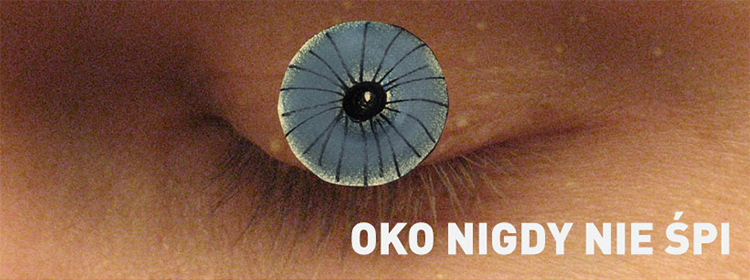
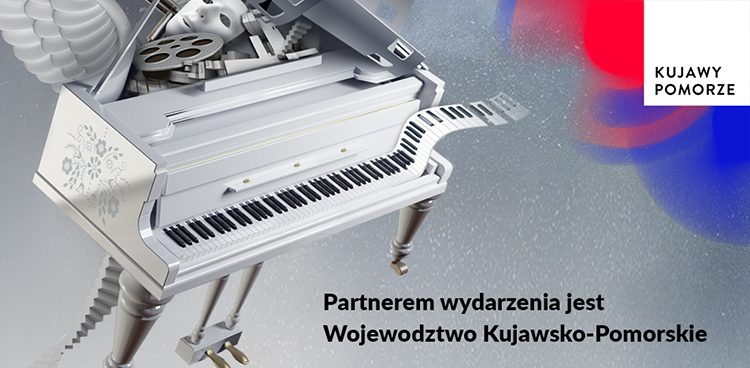

Rok
2019
Miejsce
Bydgoszcz, Ostromecko




